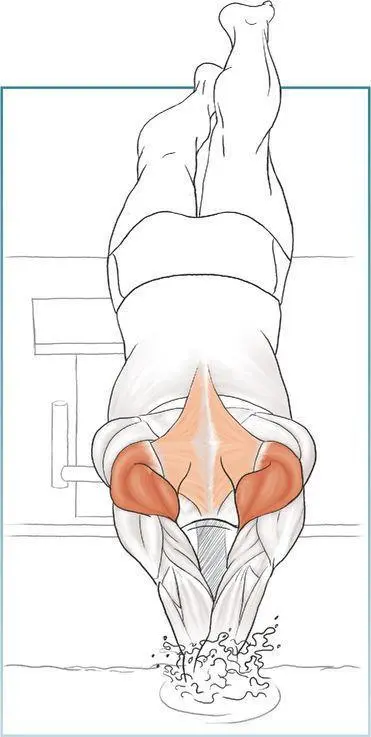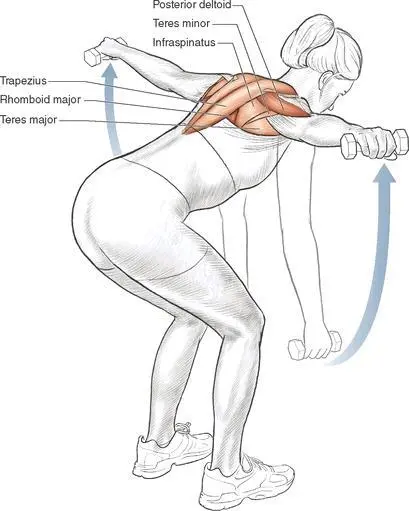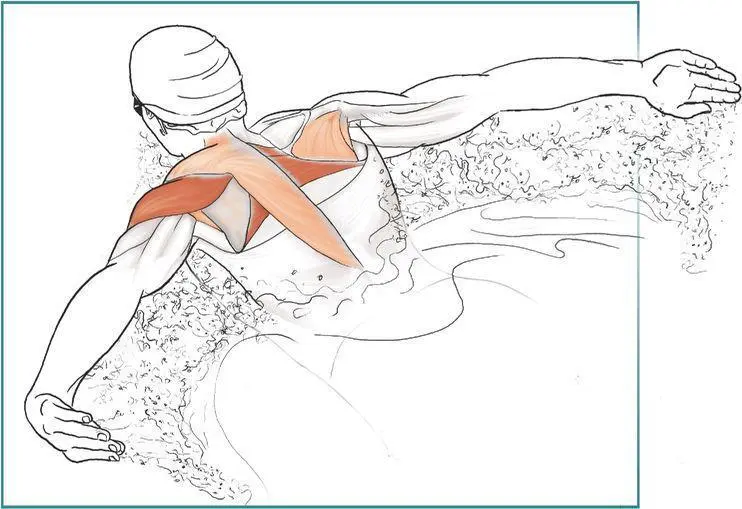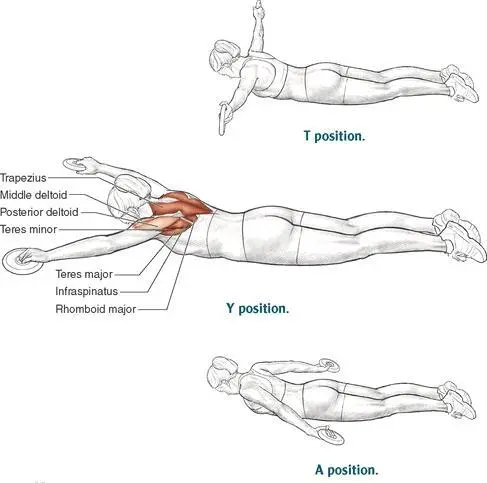McLeod Ian - Swimming Anatomy
Здесь есть возможность читать онлайн «McLeod Ian - Swimming Anatomy» весь текст электронной книги совершенно бесплатно (целиком полную версию без сокращений). В некоторых случаях можно слушать аудио, скачать через торрент в формате fb2 и присутствует краткое содержание. Год выпуска: 2009, ISBN: 2009, Жанр: Природа и животные, на английском языке. Описание произведения, (предисловие) а так же отзывы посетителей доступны на портале библиотеки ЛибКат.
- Название:Swimming Anatomy
- Автор:
- Жанр:
- Год:2009
- ISBN:978-0736075718
- Рейтинг книги:5 / 5. Голосов: 1
-
Избранное:Добавить в избранное
- Отзывы:
-
Ваша оценка:
- 100
- 1
- 2
- 3
- 4
- 5
Swimming Anatomy: краткое содержание, описание и аннотация
Предлагаем к чтению аннотацию, описание, краткое содержание или предисловие (зависит от того, что написал сам автор книги «Swimming Anatomy»). Если вы не нашли необходимую информацию о книге — напишите в комментариях, мы постараемся отыскать её.
Swimming Anatomy — читать онлайн бесплатно полную книгу (весь текст) целиком
Ниже представлен текст книги, разбитый по страницам. Система сохранения места последней прочитанной страницы, позволяет с удобством читать онлайн бесплатно книгу «Swimming Anatomy», без необходимости каждый раз заново искать на чём Вы остановились. Поставьте закладку, и сможете в любой момент перейти на страницу, на которой закончили чтение.
Интервал:
Закладка:
1. With a dumbbell in each hand, raise your hands forward until the dumbbells are level with your shoulders.
2. Return to the starting position and then raise the dumbbells laterally, again until they are level with your shoulders.
3. Return to the starting position and then lift the dumbbells back behind your torso at approximately 45 degrees.
4. Start again with the forward raise.
Muscles Involved
Primary:Anterior deltoid, middle deltoid, posterior deltoid
Secondary:Supraspinatus, trapezius
Swimming Focus
This exercise targets all three portions of the deltoid (anterior, middle, and posterior), making it an excellent all-around exercise for strengthening the shoulders. As a result, it strengthens the recovery phase of all four strokes. For the younger swimmer first entering the sport, this is a good exercise for the initial development of shoulder strength, which will be important as the swimmer progresses and increases yardage gradually. For the older swimmer, because of the multiple movements targeted, this exercise is better suited for building endurance at the beginning of the season or when recovering from an injury.

Dumbbell Shoulder Press


Execution
1. Sitting up straight, hold the dumbbells at shoulder level with your elbows in and your palms facing your body.
2. Press the dumbbells upward until your elbows are almost locked.
3. Slowly lower to the starting position.
Muscles Involved
Primary:Anterior deltoid, middle deltoid
Secondary:Pectoralis major, posterior deltoid, trapezius, supraspinatus, triceps brachii
Swimming Focus
To maximize the distanced gained during each stroke, you need to be able to enter the water with your arm or arms extended and your body in an elongated position. This exercise helps develop overhead strength and confidence in extending your reach when entering the water.
The exercise described here is a modified version of the military press motion performed in traditional weight lifting. The traditional version is usually performed with the dumbbells held in the “stick ’em up” position, with the palms rotated outward. Swimmer should avoid this position because it can place undue stress on the shoulders and could be detrimental when combined with the stress already present from the yardage load in the water.

 SAFETY TIP
SAFETY TIP
Because of the overhead nature of the exercise, young swimmers who may not have the strength and coordination to control the movement should not perform it. If you are currently experiencing shoulder pain or have a recent history of it, you should follow the 90/90 rule when performing this and other upper-extremity exercises. The 90/90 rule states that you should avoid dropping your shoulder below 90 degrees of abduction or flexion and avoid flexing your elbow more than 90 degrees.
Bent-Over Reverse Dumbbell Fly


Execution
1. Standing with a flat back, bend forward at your waist until your back is near parallel to the ground.
2. With your arms hanging, hold the dumbbells so that your palms face in.
3. Keeping your arms straight, raise the dumbbells in an arcing motion until your elbows are level with your shoulders.
4. Resisting gravity, slowly return to the starting position.
Muscles Involved
Primary:Rhomboid major, rhomboid minor, posterior deltoid
Secondary:Trapezius, infraspinatus, teres major, teres minor
Swimming Focus
This exercise can have two points of emphasis depending on the weight of the dumbbell used. Using lighter weights allows you to concentrate more on pinching the shoulder blades together at the end of the exercise, thus focusing on recruiting the rhomboid major and rhomboid minor. This is an effective way to target the rhomboids to improve their role as a dynamic stabilizer of the shoulder blades, which in turn will increase the foundational strength of the shoulder blades and decrease the risk of injury. As the weight increases, the emphasis shifts from the rhomboids to the posterior deltoid along the back of the shoulder. Targeting either of these muscle groups with this exercise will transfer to strengthening the recovery phase of breaststroke and butterfly, as well as contribute to the initial portion of the recovery during freestyle.

 SAFETY TIP
SAFETY TIP
Be sure to keep your head in line with your back when performing this exercise. Lifting your head will lead to arching of the low back, and dropping your head will cause rounding of the upper back. Either motion can place unnecessary stress on the low to mid-back.
Prone T, Y, A (Blackburn)


Execution
1. Lying facedown, slightly arch your upper back and lift your shoulders off the ground.
2. In a T position with your thumbs pointing to the ceiling, oscillate your hands up and down for 30 seconds.
3. Switching to the Y position with your palms down, oscillate your hands up and down for 30 seconds.
4. Finish with your hands down by your sides forming an A. With your palms up, oscillate your hands up and down for 30 seconds.
Muscles Involved
Primary:Rhomboid major, rhomboid minor, infraspinatus, teres major, teres minor, supraspinatus, trapezius
Secondary:Anterior deltoid, middle deltoid, posterior deltoid
Swimming Focus
Because of the variety of shoulder positions used, this exercise targets most of the muscles that support the shoulder blade (scapular stabilizers). Performing this exercise will help to enhance the stability of the shoulder blade, which will aid in transferring the forces generated by the arms to the rest of the body while swimming and help prevent shoulder injuries.
During the exercise the focus is on squeezing the shoulder blades together and performing small, rapid oscillatory movements with the arms. As endurance improves and you are able to maintain good form while holding each of the three positions for 60 seconds, you can incorporate weights as shown to make the exercise more challenging. These muscles are small, so any weights used should be very light (1.25 to 2.5 lb, or .55 to 1.1 kg, to start) and changes should be made in small increments.
Читать дальшеИнтервал:
Закладка:
Похожие книги на «Swimming Anatomy»
Представляем Вашему вниманию похожие книги на «Swimming Anatomy» списком для выбора. Мы отобрали схожую по названию и смыслу литературу в надежде предоставить читателям больше вариантов отыскать новые, интересные, ещё непрочитанные произведения.
Обсуждение, отзывы о книге «Swimming Anatomy» и просто собственные мнения читателей. Оставьте ваши комментарии, напишите, что Вы думаете о произведении, его смысле или главных героях. Укажите что конкретно понравилось, а что нет, и почему Вы так считаете.











